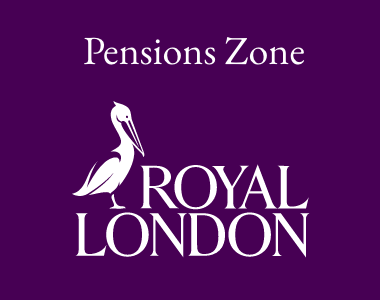In any advice scenario, it is good practice to ensure that the client is clear about what service is to be provided and what the cost will be, says Steve Bailey, director ATEB Consulting
It is not just good practice, it is also a rule requirement:
COBS 6.1.9 – “A firm must provide a client with information on costs and associated charges …”
COBS 6.1.11 – “… in good time before the provision of designated investment business …”
The general principle here is that firms should not undertake chargeable work until the client has formally contracted to that work being done and in full knowledge and acceptance of the applicable charge. Strictly, it would be difficult to enforce a charge for work that is not ‘pre-authorised’ by means of an appropriate fee agreement – reliance on a ‘verbal contract’ could prove to be a mistake.
We do sometimes see cases where the fee agreement is provided at the same time as the suitability report. That is also problematic. As an aside, we also see many ‘client agreements’ that are merely ‘terms of business’ and a generic description of the firm’s ‘services and fees’ wrapped up in one document with a section at the end for the client to sign. While the signature arguably evidences the client’s receipt and acceptance of terms of business and having been informed of the firm’s standard services and fees (although it is worth mentioning that there is no rule requiring such a document to be signed), such ‘agreements’ often do not, in our view, satisfy the need for a clear and legally enforceable, client specific service and fee agreement.
DB Pension Transfers
There are additional requirements where the advice relates to a pension transfer. As we have noted in previous articles, a personalised charges communication must be issued to clients in addition to the firm’s standard fee disclosure documents when full transfer advice is to be provided. As with the standard disclosure, it must be issued in writing, in good time before making the personal recommendation. The personalised charges must be include specified information. Full details of what must be included can be found in COBS 6.1A.18A.
In FG21/3, the FCA made clear that clients need to be able to consider whether they want to incur the costs of advice before firms actively undertake any of the steps associated with the advice process. This is entirely in line with the general principle described above and also reflects the need for a legally enforceable contract to be in place. Accordingly, firms should not start work without getting the client’s agreement to the personalised charges first.
Managing client expectations
The rules require the personalised charges communication to include a statement that “the amount of charges payable … is the same whether or not the advice is to transfer or convert”.
That takes care of the non-contingent charging aspect. Or does it?
We have come across cases where clients had requested transfer advice and, despite the above statement, just assumed that they would be able to transfer and so had not adequately recognised that, in the event of a ‘do not transfer’ recommendation, there would be no transferred funds from which to pay the adviser charge. That is bad enough and suggests that the statement about the non-contingent nature of the charge should be made very clear indeed in the documentation. However, it is even worse where the client has insufficient funds to pay the charge directly but does not qualify for the financial difficulty carve-out. A complaint could well ensue.
To pre-empt this possibility, we recommend that firms should include in the personalised charges communication, and any separate fee agreement, confirmation from the client that they can and will meet the cost in the event that a transfer is not recommended or otherwise does not proceed. In the event that a client signed such a declaration but the fact find indicated no means of paying the adviser charge, a discussion is required. If the discussion confirms that the client would be unable to pay the fee directly, the firm should not proceed to undertaking any services related to full pension transfer or conversion advice, such as parts of appropriate pension transfer analysis or transfer value comparator, as otherwise, the firm would be obliged to ‘take reasonable steps’ to enforce payment of the firm’s transfer advice fee.
Insistent clients
There is one other complaint risk that needs to be addressed here. Many adviser firms choose not to implement transfers where the recommendation was to not transfer and the client wishes to proceed anyway on an insistent client basis. Firms are entitled to take that position as a matter of policy or because of PII restrictions.
Read our previous article on insistent clients here.
However, it would be prudent for such firms to make very clear in the ‘triage’ process, the personalised charges communication and any separate fee agreement that they do not act for insistent clients and what the potential implications of that are. We say this because we are aware that some firms have had client complaints when the client wants to transfer despite receiving a don’t transfer recommendation. After all, that is the client’s statutory right, provided that any required confirmation of appropriate independent advice is provided to the scheme trustees.
Why would clients complain when they can simply obtain the confirmation of advice and implement the transfer themselves? The answer is because many pension providers will not accept transfers in unless the client was advised to transfer. So clients trying to implement a transfer themselves will probably struggle to find a taker, or one that they are comfortable with – and then complain to the adviser firm that this situation was not made clear to them at outset. And they would have a point!
Our View
The ban on contingent charging for transfer advice has resulted in many unintended consequences. Unfortunately, some of these have only come to light when it is too late to take mitigating action, such as providing clear warnings to clients about any limitations in the firm’s transfer advice service. Firms would be well advised to consider whether their current disclosure and fee agreement documentation addresses the required ground.
Review your existing documentation in light of the issues raised here. Ensure clients are clearly warned, both verbally and in the disclosure process, of the possibility of a ‘don’t transfer’ recommendation and what the implications of that are in terms of the adviser fee and the likely difficulties of proceeding as an insistent client where the firm does not deal with insistent clients. If the fact find process confirms that the client would be unable to pay the adviser charge, the process should cease there but the case should still be logged in the firm’s management information for the sake of completeness.
[Main image: mathew-schwartz-sb7RUrRMaC4-unsplash]
































